2024 Inventory Count: April 23rd – April 30th, normal operations resuming on May 1st. All orders placed after cut-off will be processed the week of May 1st. More information.
Home / How Geography Affects the Outdoor Garden
Home / How Geography Affects the Outdoor Garden
Home / How Geography Affects the Outdoor Garden
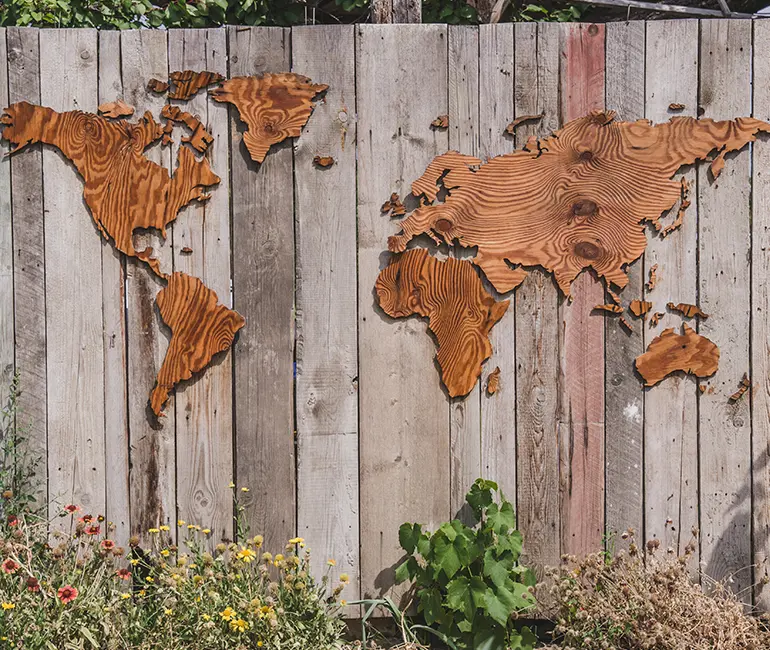
Since the 1960s, Northern California’s Emerald Triangle has been home to some of the world’s most renowned outdoor operations. Located across three counties, Humboldt, Trinity and Mendocino, the Emerald Triangle presents some of the most ideal conditions for outdoor cultivation. In this idealistic environment, where factors like temperature, humidity and air movement work together to cultivate some of the world’s finest produce, the Emerald Triangle is able to host some of California’s most talented growers. This is not to say that the growing season goes without challenges; pests, wildfires and blights of plant disease still present constant challenges to growers every year. However, season after season, the temperate weather, porous soil and sunlit slopes of the Emerald Triangle continue to produce the most consistent and quality-driven outdoor cannabis.
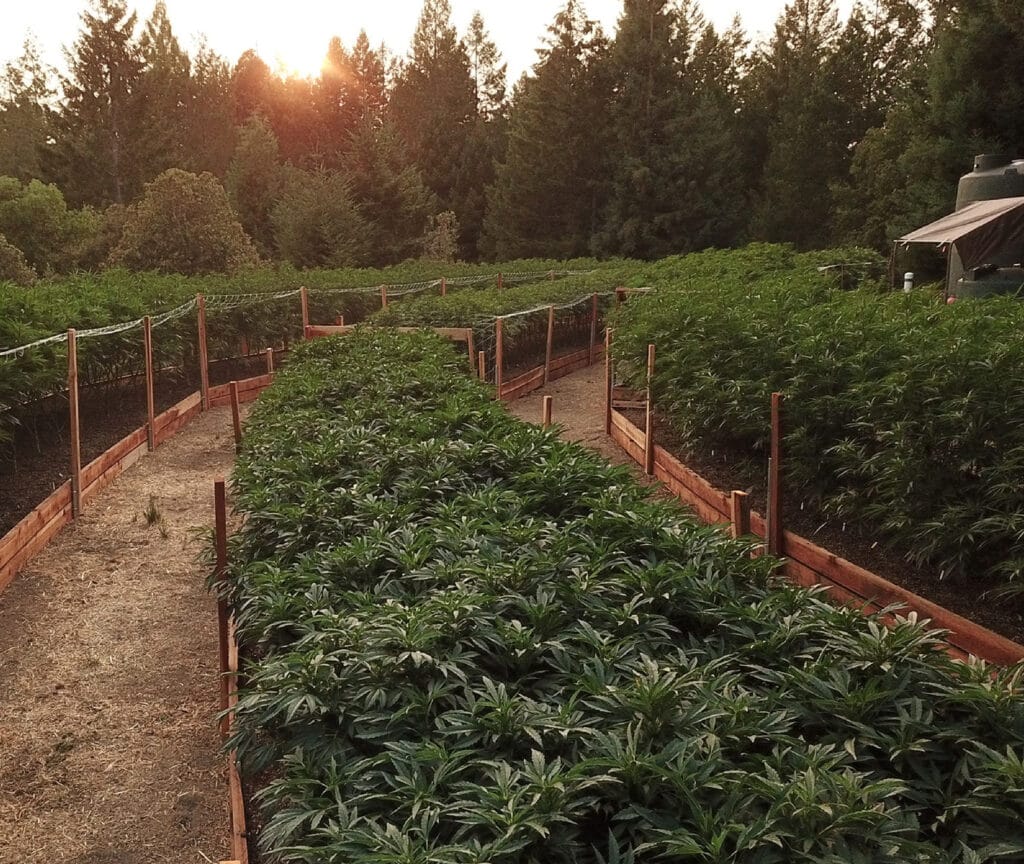
While it is impossible to identically emulate the rolling hills of Northern California here in Canada, we too are capable of having a successful and first-rate growing season. The most important thing to understand about the analogy above, however, is how geographical location can affect the outcome of a garden. Due to our country’s size, growers across the nation face a variety of challenges throughout the season, not faced by gardeners below the 49th parallel; these include, but are not limited to: a shorter growing season, high humidity and variation in the environment from coast to coast. For the best possible outcome in the garden, follow the passages below on tips that can help lead your garden to a successful harvest.
If any Canadian region has an innate advantage during the growing season, it’s the Pacific Northwest. For example, if you examine the charts on the right, you’ll notice that the temperate regions of British Columbia’s lower mainland are climatically aligned with the Emerald Triangle’s counties in Northern California. N. California may still have a longer available growing season, but the overall temperate nature of the climate and rates of precipitation are all closely correlated with ideal weather for outdoor gardening. However, this in no way means that other regions in Canada can’t have a successful growing season – it just goes to show how geography can affect the garden in a major way.
The maps to the right show the highest points of precipitation in both British Columbia, Canada and California, USA. Although the graphs themselves come from different sources, it’s easy to notice that the Emerald Triangle in Northern California has a very similar “average annual precipitation” rate as the British Columbian Pacific Coast.
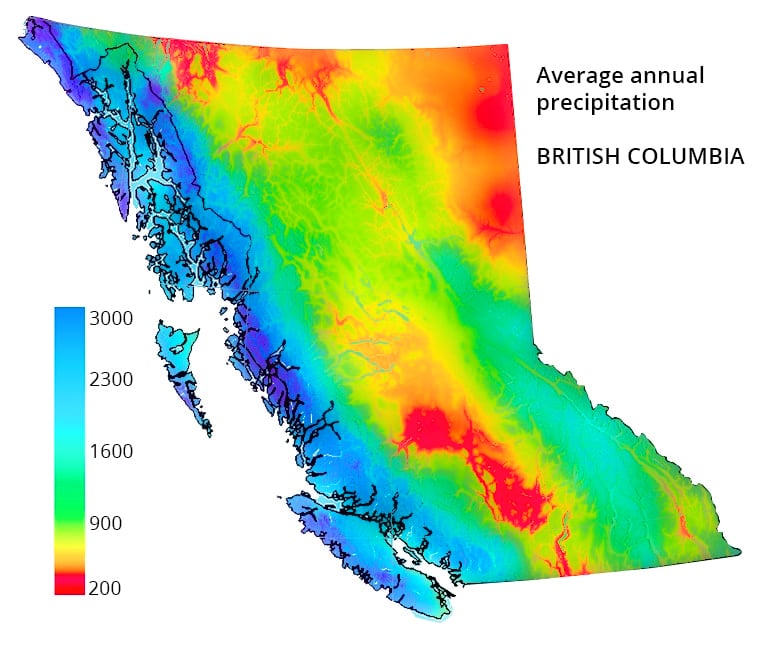
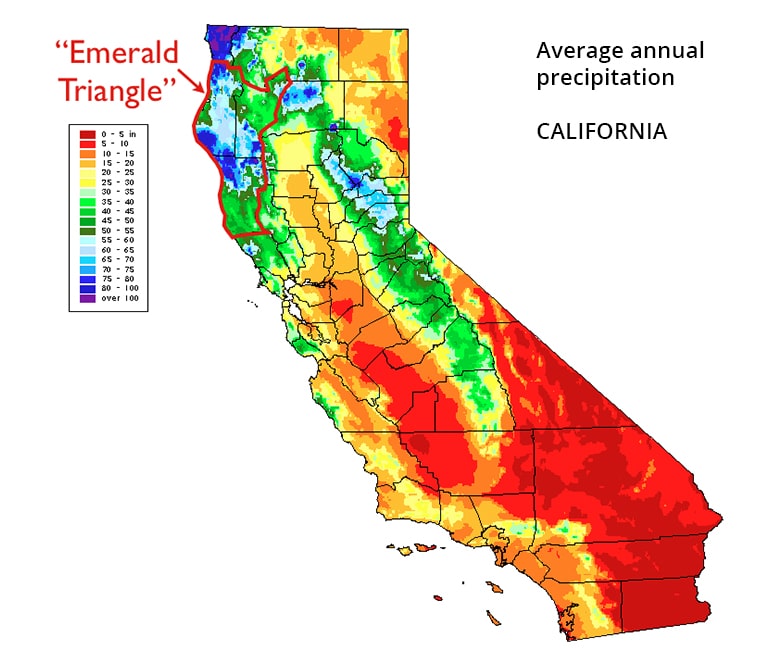
Even in Canada’s most mild regions, like the Pacific Northwest, growers endure challenges that are aligned to their geographical location. Among the other challenges that prohibit the Canadian growing season, a short growing season, levels of high-humidity and varying environmental conditions are perhaps the most devastating. Read the section below for tips on managing the outdoor season in Canada:
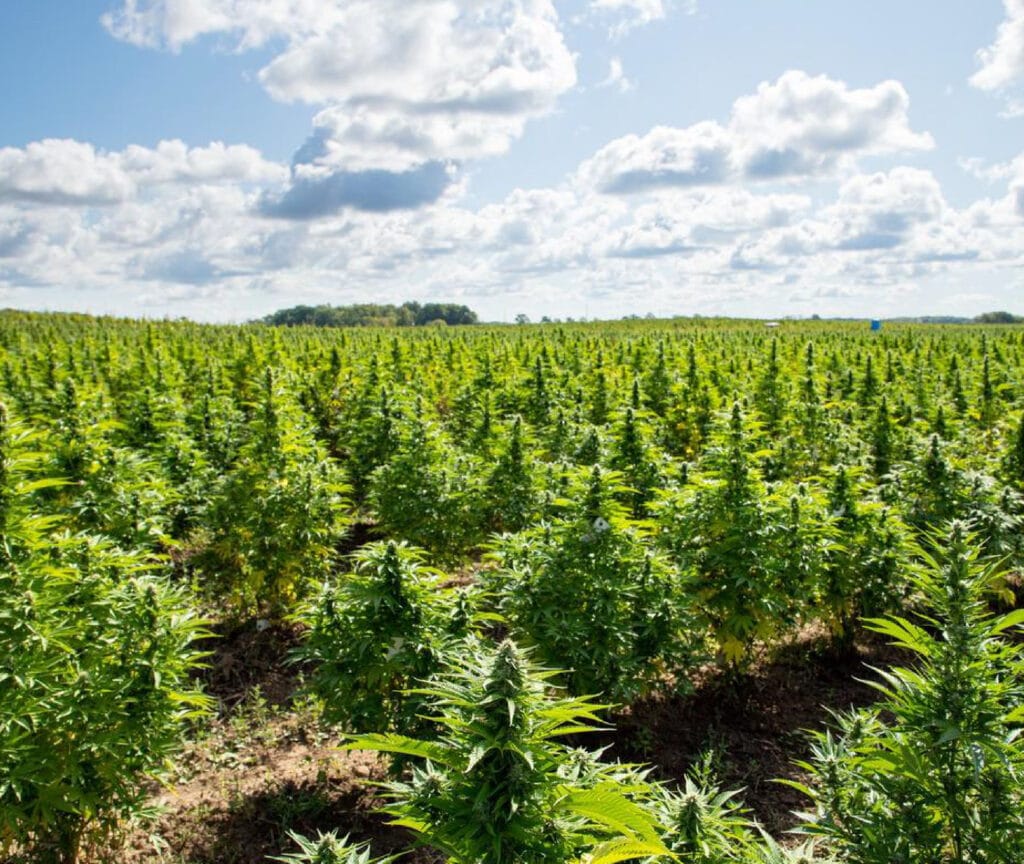
Managing short windows of ideal weather is perhaps the largest challenge Canadian growers face during the outdoor season. In other locations, like the Emerald Triangle, growers are afforded a much longer growing season due to their more central longitudinal location. However, if lucky, the Canadian growing season typically lasts about five months, ranging from mid-May to late October. In many parts of the country, the late Spring can still be full of hazardous rainfall and plant-damaging frosts. To manage harmful weather conditions during the outset of the season, consider planting late rather than early. For example, while most experts recommend transplanting outdoors a few weeks into May, sowing plants into their permanent homes in early June, maybe a better option when faced with poor weather.
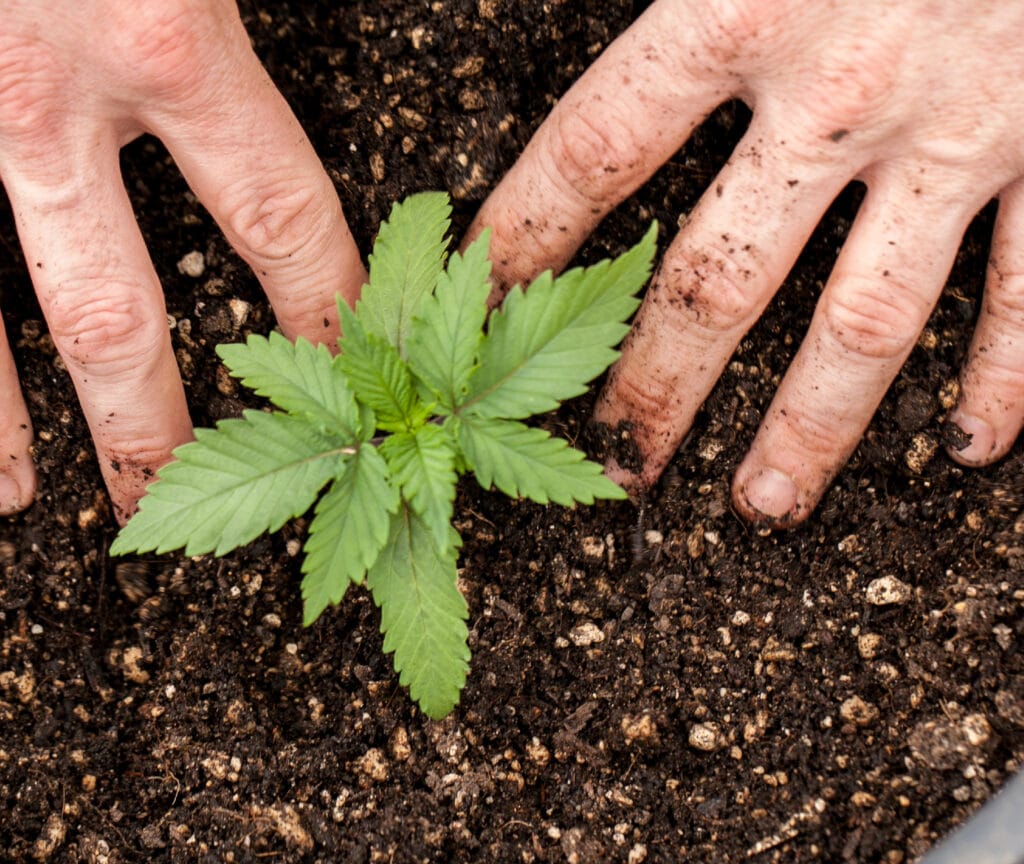
Areas of Canada, especially in the east, have extreme bouts of high temperatures and humidity during the summer months. To protect your crop against plant-damaging diseases like powdery mildew and mould, carefully select genetic profiles and strains which are disease and stress-resistant. Furthermore, selecting strains on the basis of their “flowering-time” can be helpful in ensuring safeguards against disease and stress. Plants that exhibit faster flowering times, for instance, will reach maturity quicker, and will therefore be less susceptible to pests, disease and stress in the later months of the season.
Along with a stable feeding program, the most adept outdoor growers enrich their crops with supplements like GreenPlanet Nutrients Vitathrive and Plant Guard to reduce the likelihood of a hazardous season. For example, Vitathrive is GreenPlanet’s propagation supplement that contains a full complement of b-vitamins and elements that aid the plant through the vegetative stage. Among other benefits, Vitathrive helps to reduce the stresses that come from rapid cell growth, environmental conditions, and heavy fruit loads. GreenPlanet’s potassium silicate supplement, Plant Guard, also helps prepare your plants for extreme weather conditions, by strengthening cell walls and increasing resistance to environmental stress and plant disease.
When hazards like pests and disease arise, using tested and reliable controls can decrease the chance of these issues escalating to point of no return. For pests, in particular, two controls have been tested to produce reliable results: LockDown Pads and Doktor Doom Products. LockDown Pads are an economic and unobtrusive way of controlling pests at the source. By correctly using LockDown Pads during the outdoor season, soil-dwelling pests like fungus gnats and thrips will be caught at the source of breeding and will leave your foliage untouched by harmful damage. Doktor Doom’s aerosol pesticides can be used if the pest problem has become so noticeable that it has begun to affect the general growth patterns of your plant.
Need continued support with your outdoor crop? GreenPlanet Wholesale is here to help! For more information about the products mentioned above, please contact GreenPlanet Wholesale directly. For all other inquiries about products and services offered by GreenPlanet Wholesale, contact our team or your local garden supply store for more information.
COPYRIGHT © 2023 GREEN PLANT WHOLESALE. ALL RIGHTS RESERVED.
WEBSITE MANAGED & HOSTED BY THE ELITEWEB.CoCOPYRIGHT © 2023 GREEN PLANT WHOLESALE. ALL RIGHTS RESERVED.
MANAGED BY THE WP LAB. POWERED BY ELITEWEB.CO
Monday: 8am – 4:30pm
Tuesday: 8am – 4:30pm
Wednesday: 8am – 4:30pm
Thursday: 8am – 4:30pm
Friday: 8am – 4:30pm
Saturday: Closed
Sunday: Closed
Week of Dec 18-22- Regular operating hours
Dec 25- Closed (Stat Holiday)
Dec 26- Closed (Non-Stat day off with pay)
Dec 27-29- Regular operating hours
Jan 1- Closed (Stat Holiday)
Jan 2-5- Regular operating hours